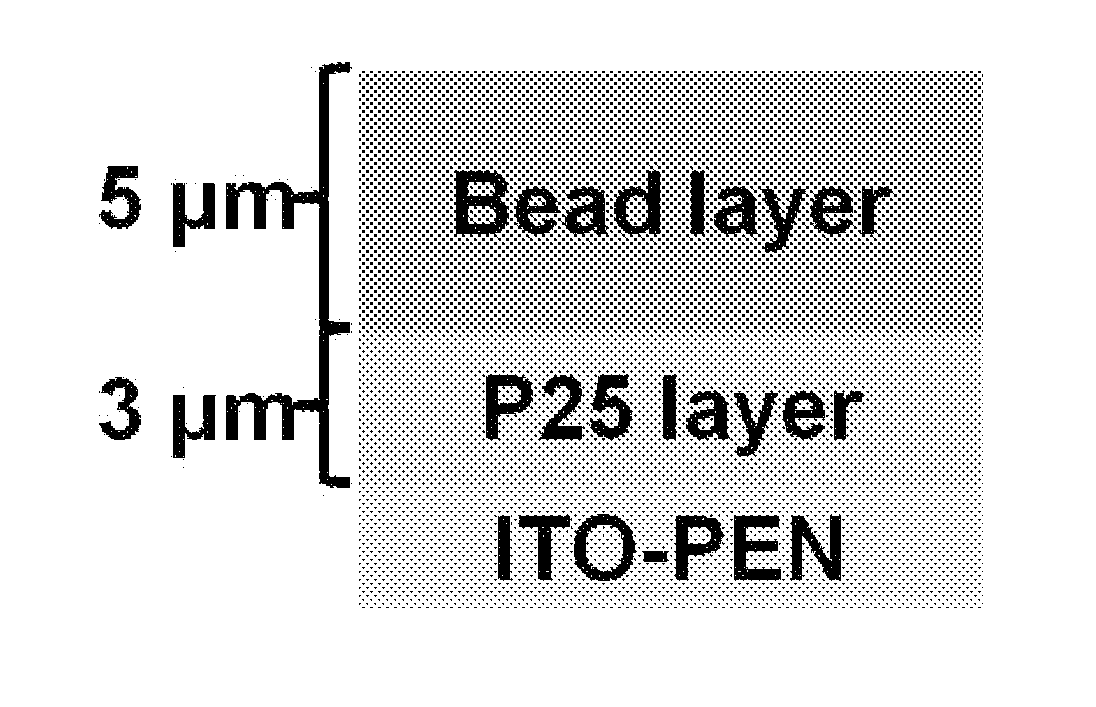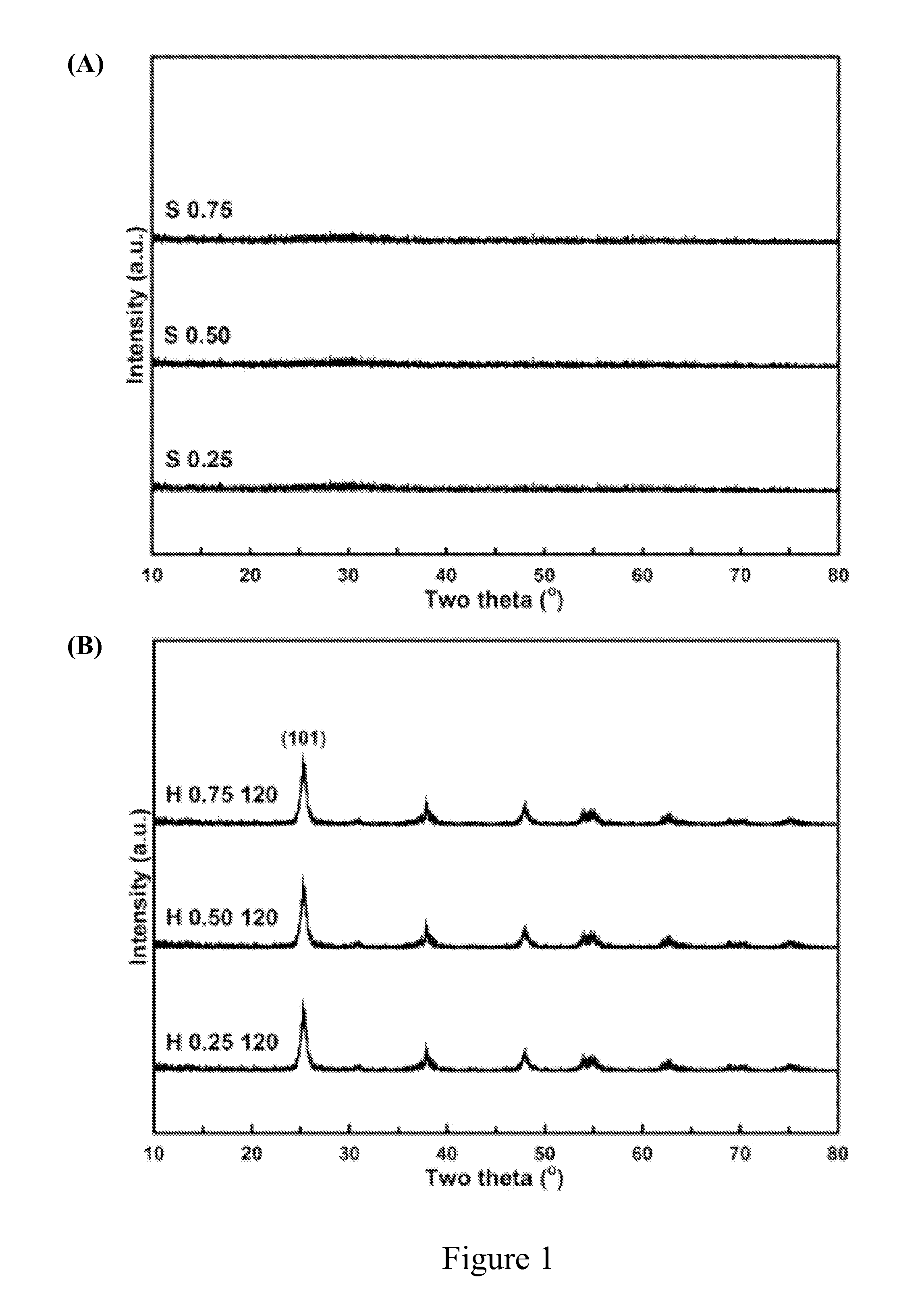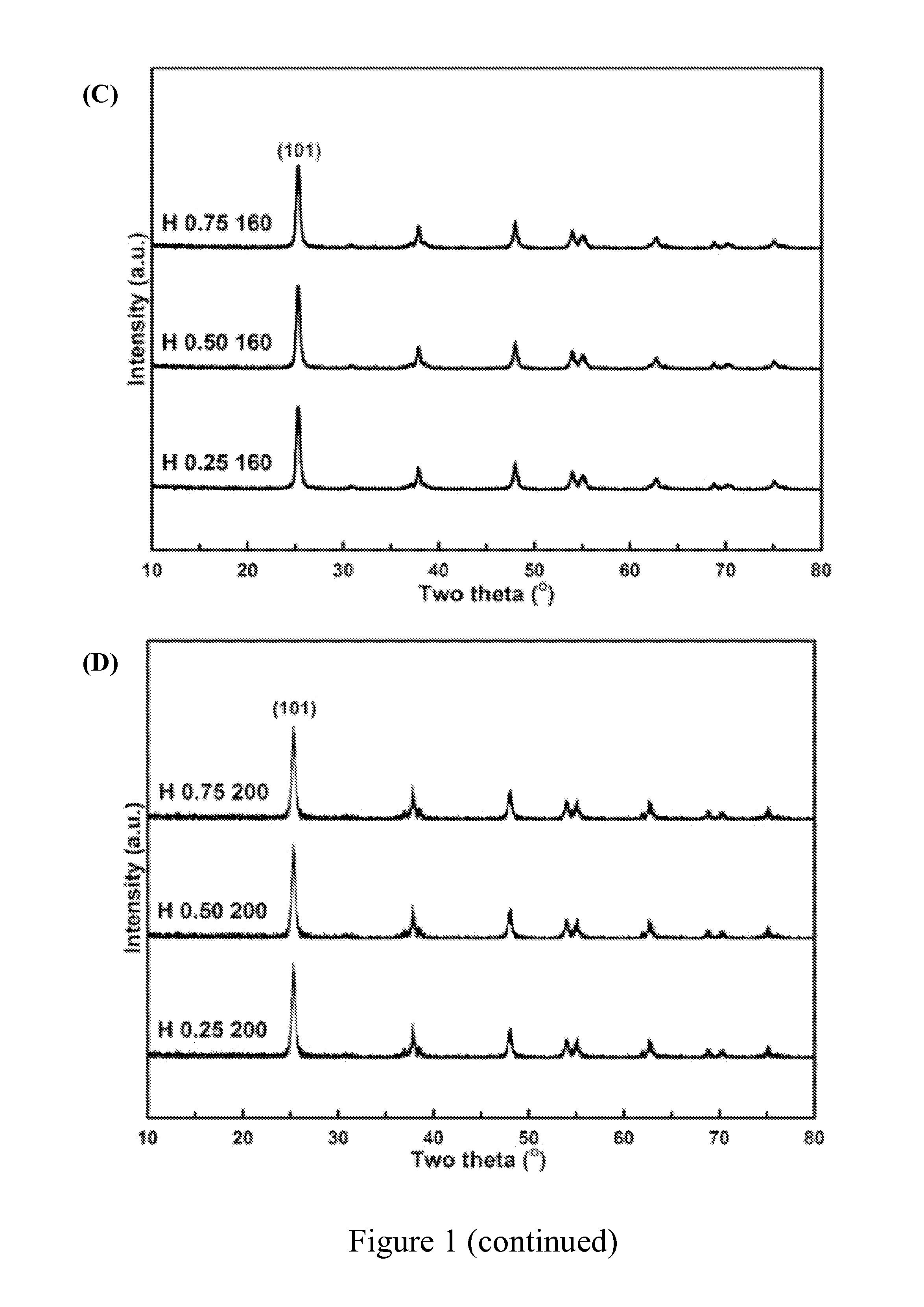Mesoporous titania bead and method for preparing the same
a titania bead and mesh technology, applied in the field of mesh bead, can solve the problems of high cost of silicon solar cells, exhaustion of fossil fuels, etc., and achieve excellent light scattering, high efficiency cells, and increased electron diffusion
- Summary
- Abstract
- Description
- Claims
- Application Information
AI Technical Summary
Benefits of technology
Problems solved by technology
Method used
Image
Examples
example 1
Analysis of the Titania Products of the Present Invention
[0048]A series of titania products were prepared by using different amount of steric agent (0.25 g, 0.50 g or 0.75 g) and heating at different temperature (120° C., 160° C. or 200° C.) in water-heating treatment. These titania products were labeled with the letter “H” to show that there were obtained after water-heating treatment. For example, “H 0.25 120” represents the titania product prepared by using 0.25 g of steric agent (hexamine) and heating at 120° C. in water-heating treatment by the preparation method of the present invention.
I. Crystal Structure Analysis of the Titania Product of the Present Invention
[0049]The titania products of the present invention were objected to XRD phase identification and electron microscope analysis to identify if these products had a long-range order crystal structure, namely, the structure of anatase titania.
[0050]First, the titania products of the present invention were separately dried...
example 2
Preparation of Dye-Sensitized Solar Cells with an Electrode Manufactured by Using the Titania Product of the Present Invention and P25 Powder and Efficiency Analysis Thereof
[0066]The dye-sensitized solar cells comprising a photoelectrode shown in Table 6 were manufactured as foresaid. The structure of these photoelectrodes is shown in FIG. 5(A), which is a well-known structure of dye-sensitized solar cells, comprising two layers made of titania, wherein the first one is scattering layer (bead layer) and the second one is a titania nanoparticle layer (P25 layer). In Table 6, photoelectrode A merely comprised a titania nanoparticle layer composed of pure P25, no scattering layer was comprised. Photoelectrode B comprised a titania nanoparticle layer composed of pure P25 and a scattering layer composed by pure P25, so it was substantively equal to a pure P25 nanoparticle layer of 8 μm. In photoelectrode C-G, the second layer was composed of the titania products of the present invention,...
example 3
Preparation of Dye-Sensitized Solar Cells with an Electrode Manufactured by Using the Titania Product of the Present Invention Alone and Efficiency Analysis Thereof
[0073]The dye-sensitized solar cells comprising a photoelectrode shown in Table 7 were manufactured as foresaid, wherein the structure of these photoelectrodes is shown in FIG. 5(B). Photoelectrode 0 was composed of the nanoparticle H 0.25 200, which was not in form of bead. Photoelectrodes H-N were prepared by using the mesoporous titania bead of the present invention alone. Sample B was the control. The labels of the titania products of the present invention are as foresaid described.
TABLE 7Result of titania layers of photoelectrode prepared by usingthe titania product of the present invention alonethick-BeadCellPhoto-nesssizeDye loadingefficiency ηSampleelectrode(μm)(nm)(×10−7 mol / cm2)(%)BP258—2.374.29HH 0.75 1207.53755.603.16IH 0.75 1602.77501.902.63JH 0.75 1605.27503.643.69KH 0.75 1607.87505.484.03LH 0.75 16010.07506...
PUM
| Property | Measurement | Unit |
|---|---|---|
| pore radius | aaaaa | aaaaa |
| porosity | aaaaa | aaaaa |
| specific surface area | aaaaa | aaaaa |
Abstract
Description
Claims
Application Information
 Login to View More
Login to View More - R&D
- Intellectual Property
- Life Sciences
- Materials
- Tech Scout
- Unparalleled Data Quality
- Higher Quality Content
- 60% Fewer Hallucinations
Browse by: Latest US Patents, China's latest patents, Technical Efficacy Thesaurus, Application Domain, Technology Topic, Popular Technical Reports.
© 2025 PatSnap. All rights reserved.Legal|Privacy policy|Modern Slavery Act Transparency Statement|Sitemap|About US| Contact US: help@patsnap.com



